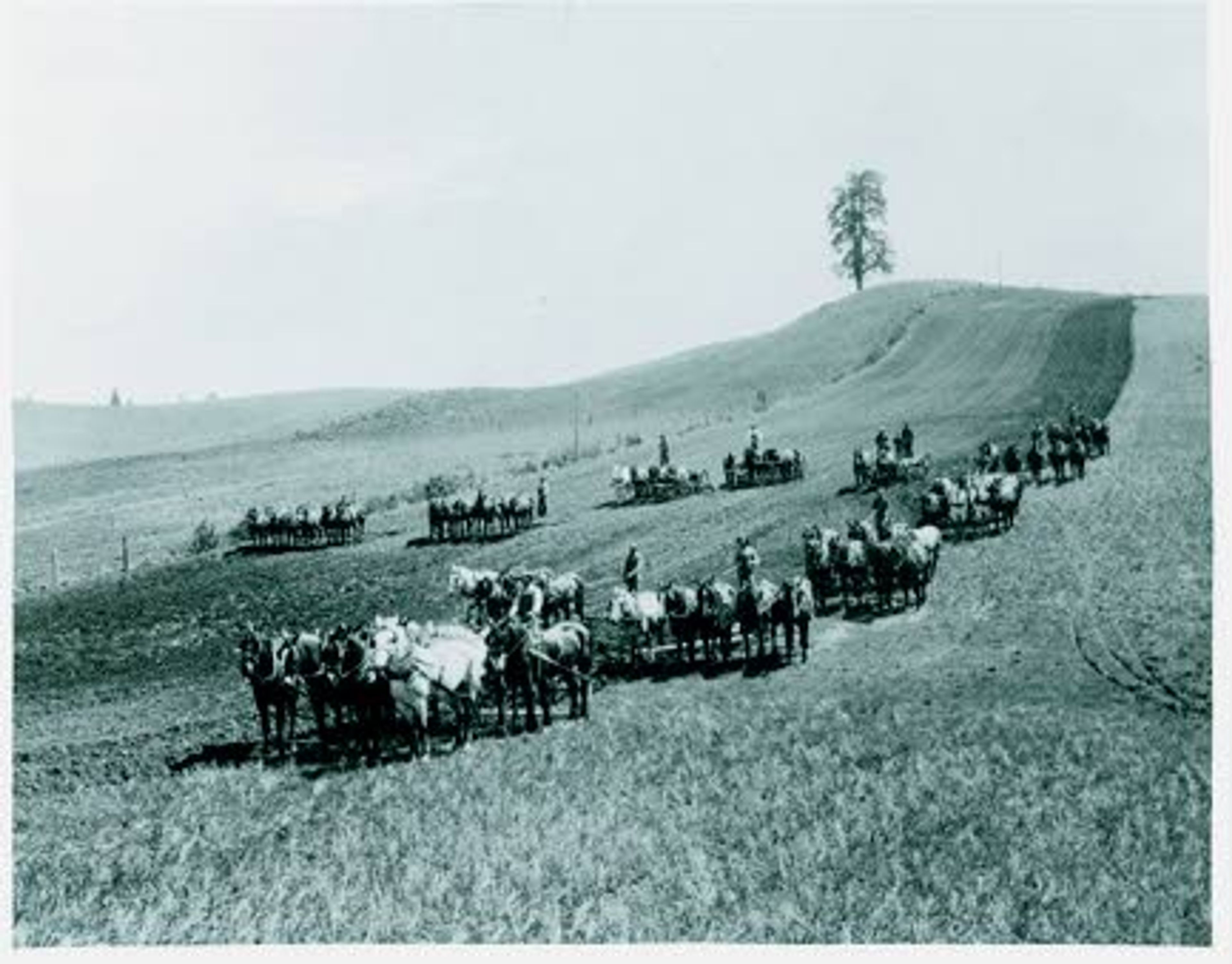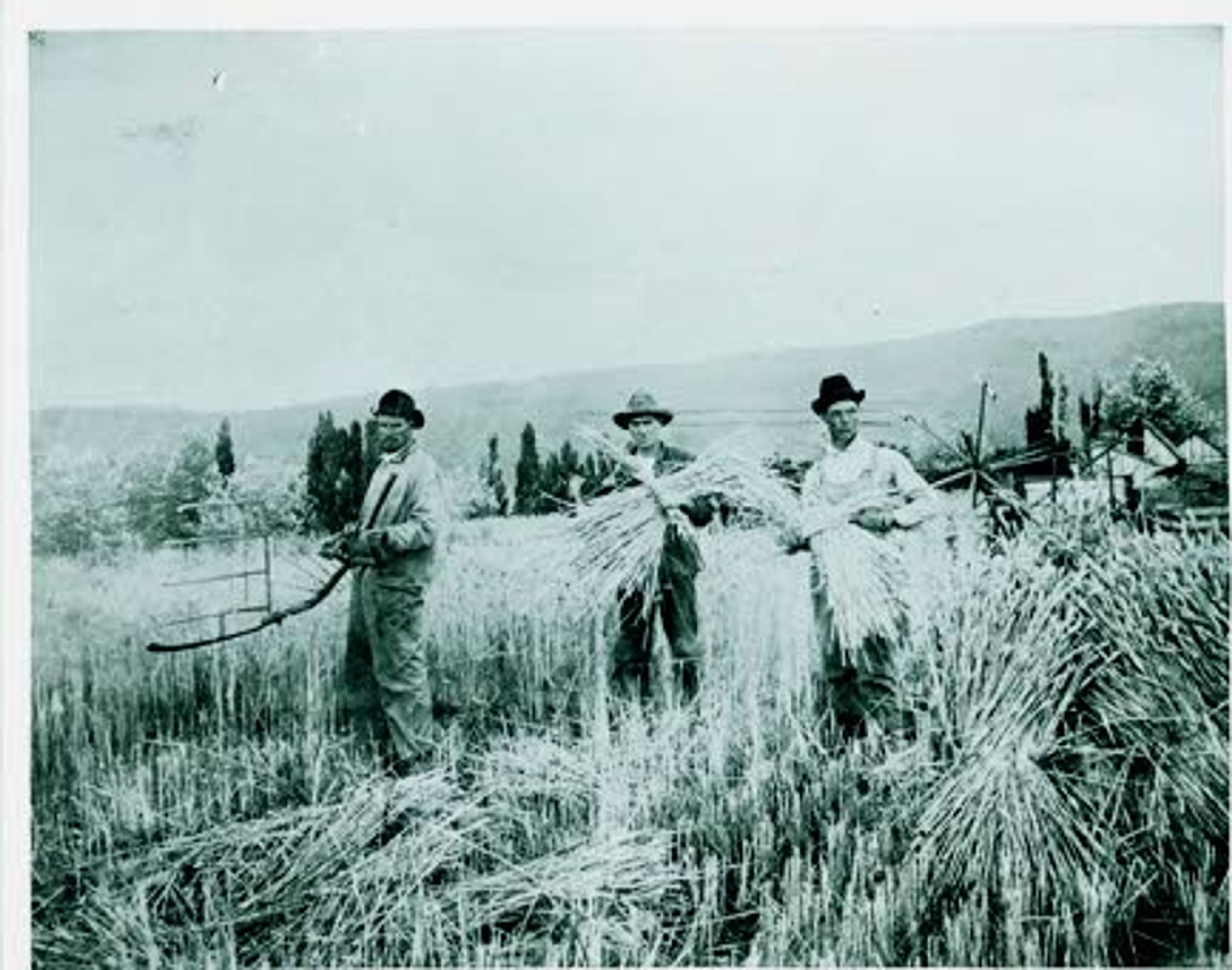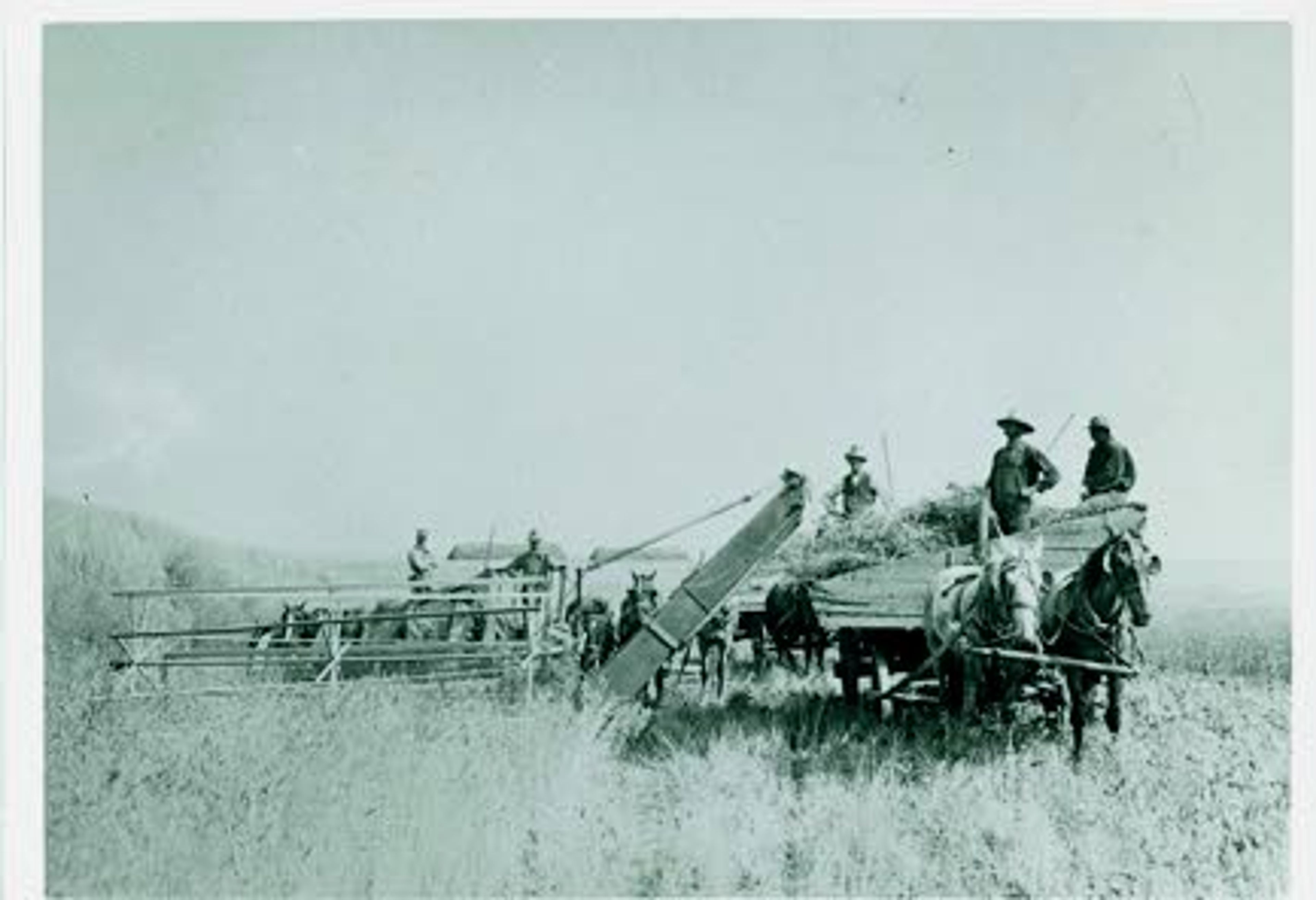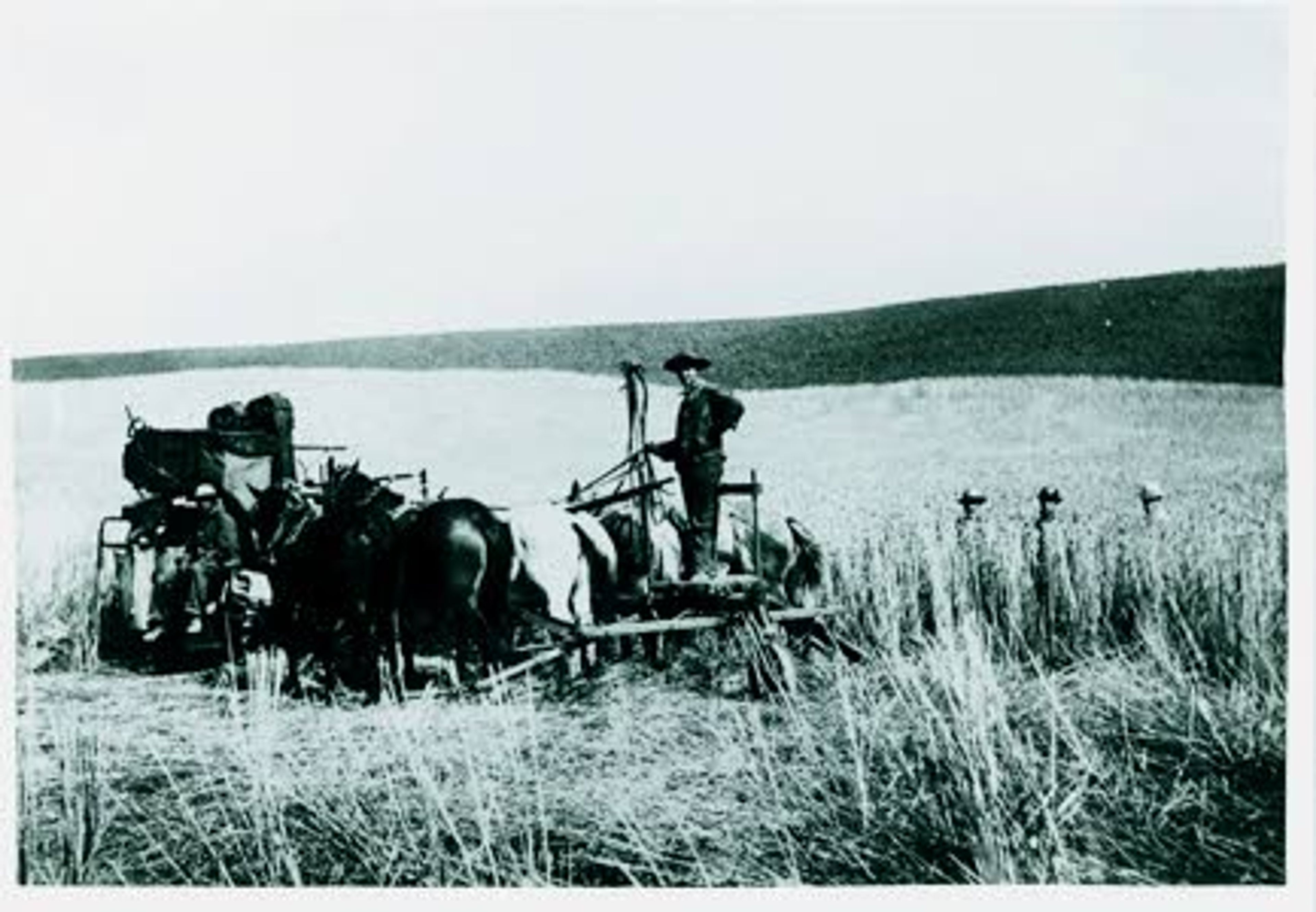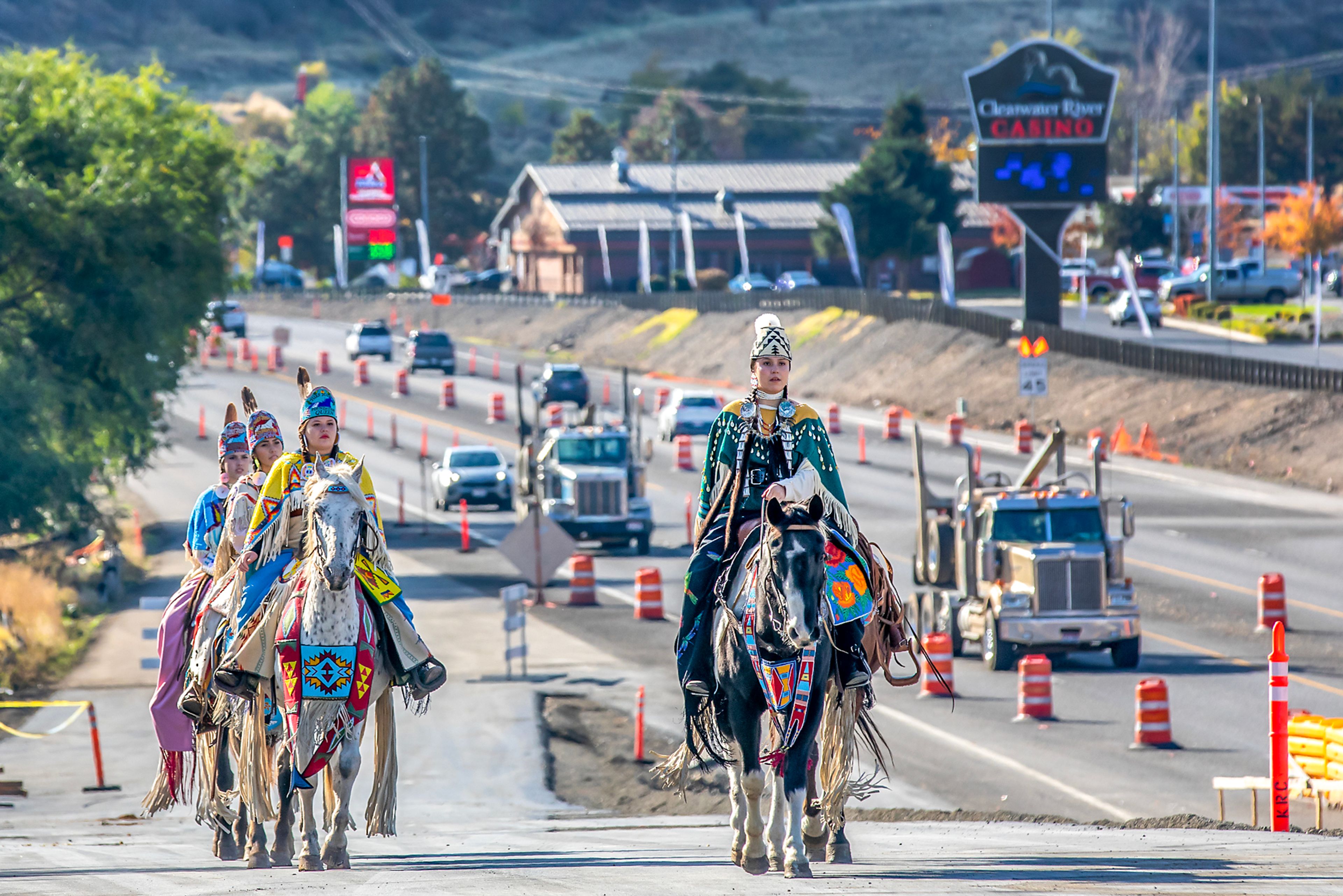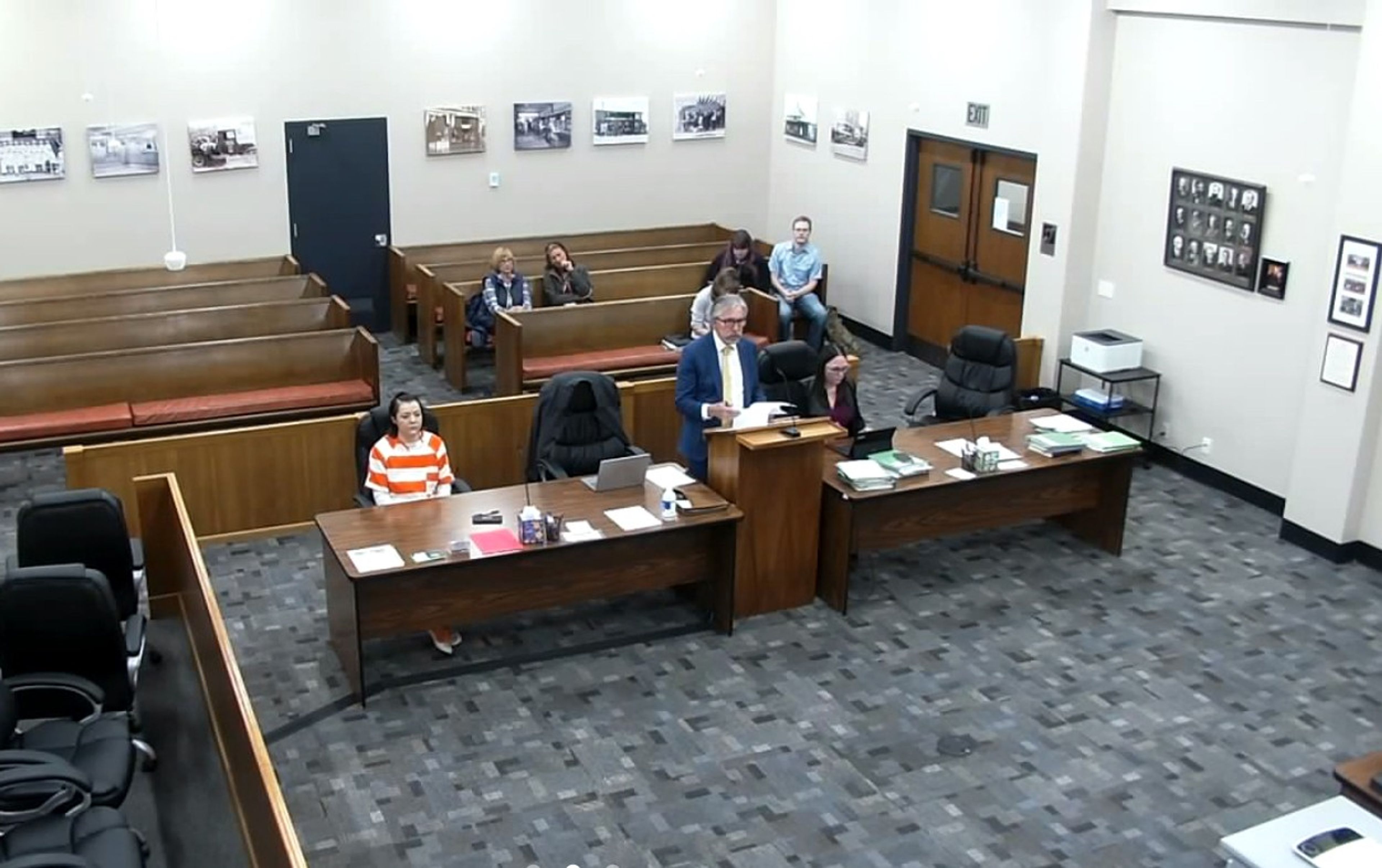The wildly diverse terrain of Latah and Whitman counties has been aptly called a "tousled tapestry of contrasts, with valleys, hills and mountains woven together by the twisted course of the Palouse River and its tributaries."
Such geographical diversity early foretold the corresponding challenges settlers and farmers faced and helped define the unique course of Palouse agricultural history.
Early settlers arriving by riverboat and covered wagon recognized that bunchgrass and other plants on the plateau above the Snake River were perfect for grazing cattle. Livestock numbers grew with the numbers of families homesteading in the 1870s and '80s, and by 1890, initially profitable rangeland was overgrazed, stripped of its native vegetation and inadequate for large herds. Yet the fertile soil was still just right for growing multiple fruits, vegetables and grains. As news of new global markets arrived, however, farmers soon shifted their vision from diversified subsistence farming to focused cash-crop agriculture with an emphasis on wheat. Washington State College President Enoch A. Bryant, addressing the 1906 Wheat Convention, extolled wheat as the "region's greatest money making machine."
The arrival of railroads in the 1880s opened farmers' access to profitable markets outside the Palouse, motivating farmers to increase wheat yields. After World War I, the introduction of fertilizers enabled a 200-400 percent increase in crop production.
Just as important were the advances in farm implements. Imagine the change from using a cradle scythe and sickle to cut grain stalks by hand and a wooden flail to manually beat these to release the kernels. Next, imagine having to shovel these kernels into burlap gunny sacks - sewn together by hand by farmers and their families - for transport.
There was no way to meet the demand for larger harvests with such primitive equipment. Thus, enterprising inventors took the challenge and developed gang plows, mowers, balers, threshers, reaper-binders, separators and, ultimately, combines, enabling farmers to work larger and steeper areas of land. But all of these machines still depended on horses to pull them. Gang plows needed six-horse teams, which could plow, at best, about 4 acres of ground a day. Early combines were much heavier than plows, the lightest weighing as much as 22,000 pounds, requiring teams of 20 to 44 horses to pull them up and down the undulating terrain.
Tractors, combines and other forms of mechanization made farmers' jobs easier and increased productivity, but also raised the cost of farm investments and debt loads. In this region, farmers kept their labor-intensive horse teams longer than counterparts in other parts of the country, because equipment developed for Midwest and Southern harvests was simply not as effective on steep Palouse hills.
Accordingly, feed and maintenance expenses and wages of farmhands who cared for and worked large horse teams cut profits considerably.
Prolonging horse-team harvesting, however, also serendipitously fostered technological change. Two Moscow blacksmiths, Cornelius Quesnell and Andrew Anderson, ingeniously designed a lightweight pushed, rather than pulled, combine, christened the "Little Idaho." The invention preserved grain volume because horse teams were behind the machine and didn't tread on uncut stalks. With local implement dealer Gainford "Gub" Mix and Mix's brother-in-law, mining magnate Jerome J. Day, Quesnell and Anderson secured funding to advance their prototype to commercialization and founded the Idaho National Harvester Company. The Little Idaho, manufactured between 1905 and 1917, weighed just more than a ton. But that was one-tenth the weight of the lightest combine then in use. Further, it was only 6-feet wide and could be operated by two men and pushed by as few as two horses. Another Moscow entrepreneur, Willis Rhodes, developed a similarly effective smaller machine, the Rhodes Harvester.
These inventions enabled growers to farm steeper lands. By 1930, about 90 percent of Palouse wheat was harvested with combines.
Eventually petroleum-based technology led to the widespread adoption of motorized and self-leveling equipment to replace horse and most human labor. By 1970, combine operators could till even the steepest slopes.
Joann Jones is curator emeritus for the Latah County Historical Society.
